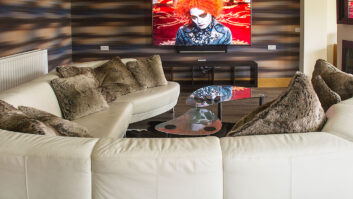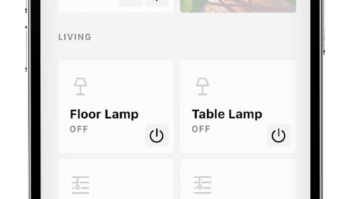This week I had the good fortune to be on a project in NYC just a few blocks from my friend Mark, who owns Home Theater Advisors. HTA does a lot of middle market work in New York and I got a chance to spend some time with him on his projects to kind of get back to my roots. It made me appreciate all the challenges faced when working with limited budgets and trying to integrate disparate brands and components. Mark and I spent a lot of time talking about the challenges and sharing strategies for overcoming them and still making a reasonable profit in this market.
Turn Your Clients into Troubleshooters
I borrowed this theme from my blogging colleague John Sciacca, who wrote entire post on the subject. Here’s my own example: Mark’s clients almost always balk when asked to buy remotes that cost $1,000 ($300-600 for the remote, $250 for the RF base and $300-450 for programming). So there’s no way he’d be able to sell them on an IP-based system that costs $1,500 and up. He has to work with what he can, which is what I remember doing earlier in my career and what I’m sure many of our loyal Residential Systems readers deal with on a regular basis.
In urban markets, RF interference is significant and can ruin your profitability with repeated service calls that clients do not want to pay for. So, Mark shows clients exactly how to identify RF interference (he even puts a little colored tape near the light that indicates interference on the base station) and shows clients how to move the base around until they have found a better place for it. He engages them in this activity in the upfront closing of the deal by telling them that this might be an issue, but to get a more robust system without these problems will cost $xxx more. Once they understand the trade-offs, he tells them he will show them how to identify the problem and solve it. If they do need to call him and it turns out to be interference, they are informed they will be charged for a service call. It is the trade off for saving hundreds of dollars up front. When phrased and presented properly, a large majority of clients understand and agree. He will help at no charge over the phone to talk them through the issue.
Take a Margin Hit Upfront to Avoid Service Calls Later
Mark is a huge fan of Sonos. He loves it because it just works. He’s frustrated at the low margins and lack of dealer support for the added value that Sonos gives away — free two-day shipping, 90-day return policy, BOGO (buy one, get one) offers — but until there is a better mousetrap, Sonos is reliable and scalable, so he sticks with it. He (and I) also love AppleTV. Clients get it, it’s easy to use, it ties into the products they already use and is part of the Apple ecosystem. He adds $100-200 to set it up and configure it, so at least there is some profit on the $99 box that Apple will not make available at a wholesale price to our channel.
Use Some Tricks of the Trade
A big challenge in the middle market is often a lack of a budget for a dedicated rack, or, in the case of NYC installs, a lack of space for one. This affects not only accessibility to the equipment for later servicing, but makes wire management a nightmare. To make the wiring look better and not like a mess of spaghetti when everything is jammed on one or two shelves in a closet, Mark (and I used to) uses wire covers and sheaths. Some of the split loam product out there goes a long way to hiding the mess of wires. Or, sometimes he uses a structured wiring box to hide excess lengths of wire or power blocks away from sight, so that all the visible wires are of the same length, making zip-tying much easier. The mess is behind a closed door on the structured wiring box.
My few days with Mark made me appreciate all of these struggles all over again. Now that I am doing more work with IP-enabled products, working on larger homes or suburban homes with space for a rack, and clients with larger budgets, I am able to avoid many of these issues. But I know the 80/20 rule is in full effect and that the majority of the projects in our industry face these challenges too.

How do you handle them?
+Todd Anthony Pumais president of The Source Home Theater Installation in New York City.






